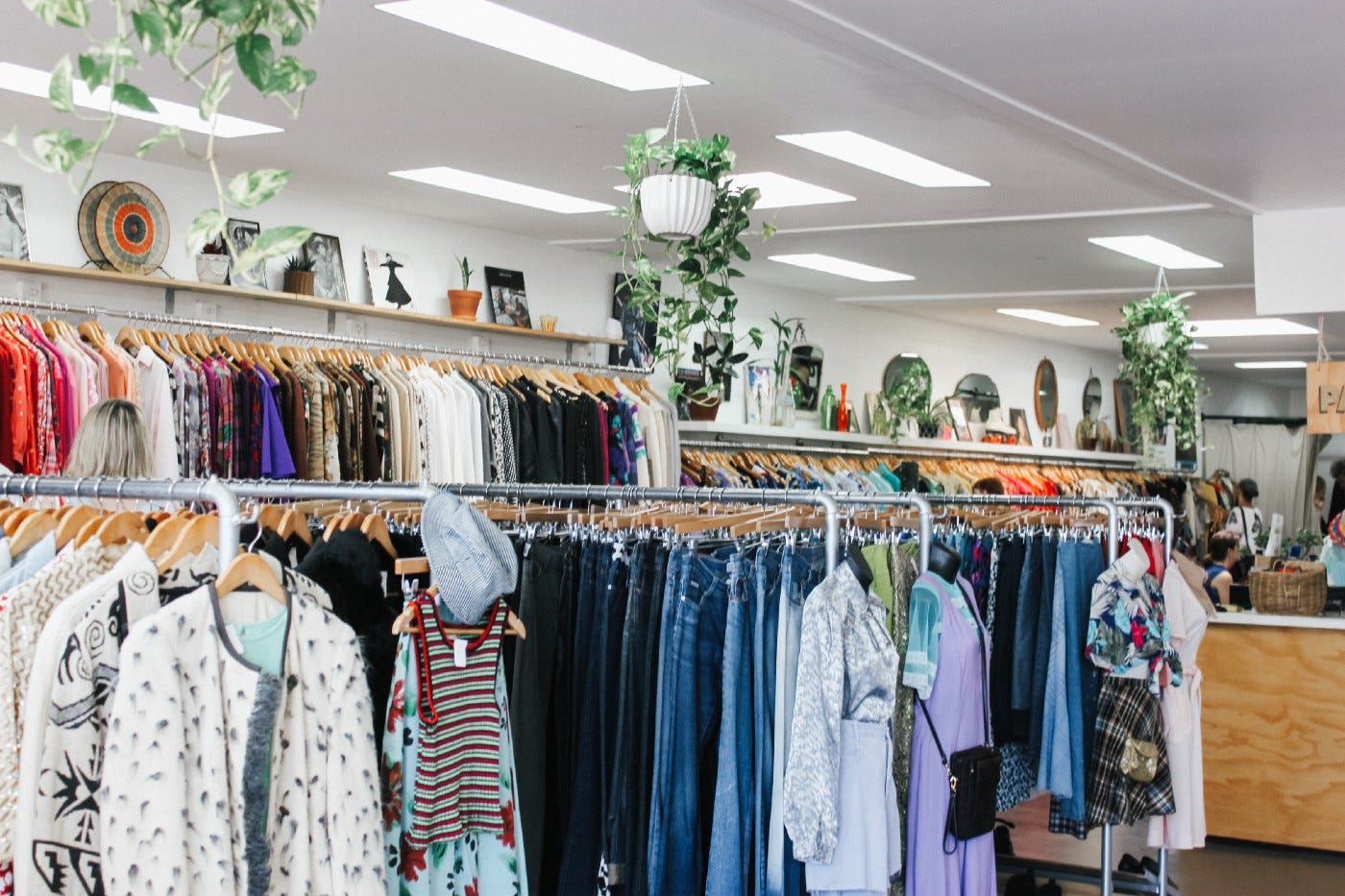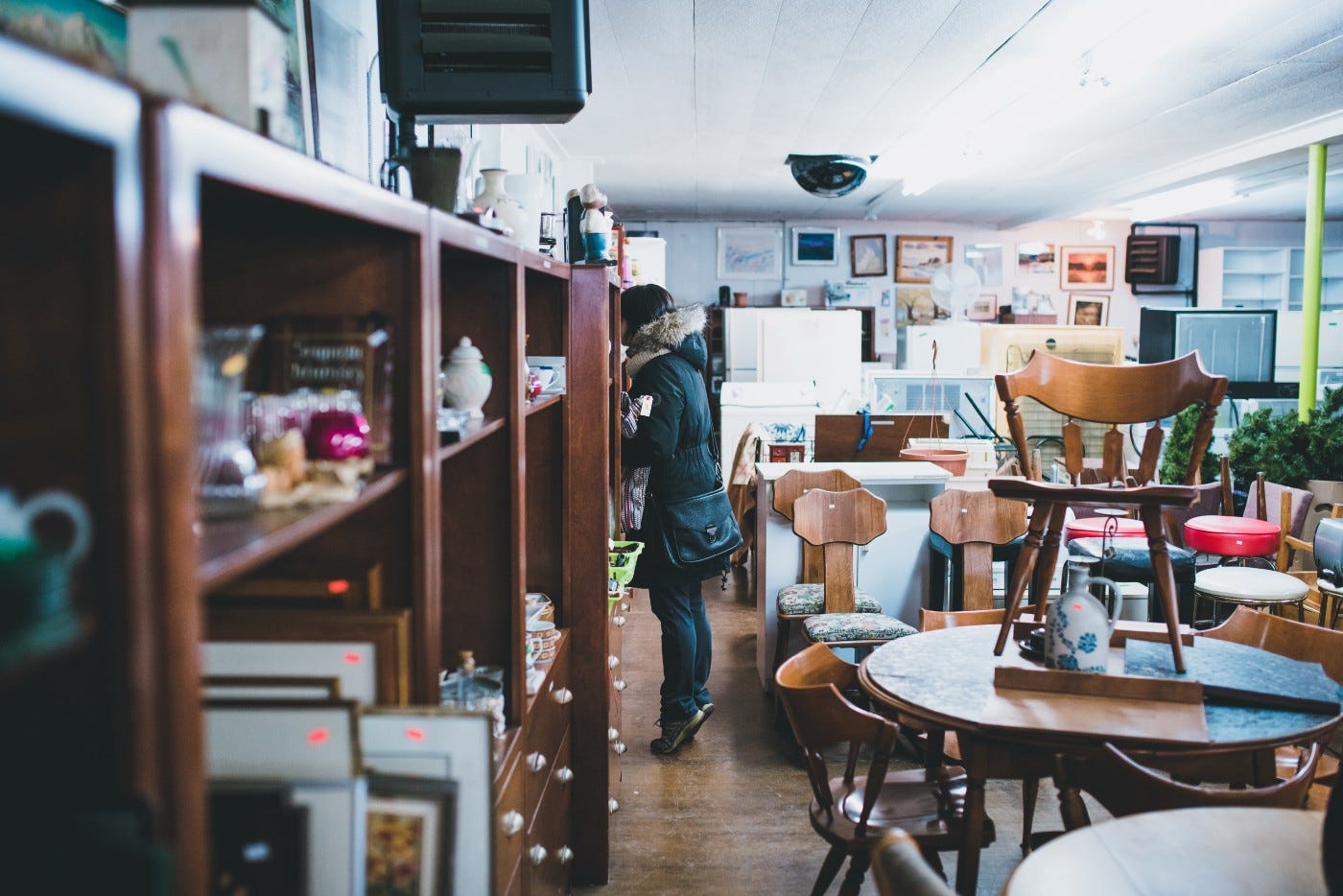
Thrift shoppers are all about the treasure hunt. They may show up with an idea of what they are looking for, but they are also looking for that unexpected thing. They want to be surprised. That is where closeouts and stock overruns from traditional retail can come into play.
A good closeout at a hot price will generate free word-of-mouth advertising as well as extra sales.
The average thrift store will always have plenty of donated clothing, toys, books, and so on. There are great thrift store finds like the Columbia winter coat priced for $10 that is like new (trust me, it’s very warm). That is the core of thrift retail. Leveling up may require putting a bit of extra zing into offerings.
Closeouts provide the opportunity to offer things that customers do not expect to find in a thrift store but are happy to see. Some closeouts I have sold include rugs, department store jewelry, Halloween costumes, pet toys, socks, RTA furniture. The list goes on and on.
Another reason to include closeouts are items customers would want that don’t normally show up in a sellable condition in donations. For me, the rug is a great example. Not many are donated that are worth selling, but there is a lot of demand for them. Donated socks are also something no one wants to put out to sell. There are always closeouts on socks and they compliment clothing sales.
Of course, there is that surprise factor. A closeout of new in-the-box shoes from a major retailer for example. I have seen a couple of opportunities on these recently. It’s a great way to supplement donated shoes and give customers something unexpected. Since these would compete with donated shoes the prices would have to be about the same as goods donated while maintaining an excellent margin. That would provide an exceptional value to the customer and good revenue for the store.
Don’t be greedy.
Closeouts should represent a great value to the customer compared to what they would pay in traditional retail. Not long ago I bought a closeout lot of press-on nails. We paid less than a dollar a pack for them and sold them for $2.99, a crazy cheap price that moved them fast. We could have easily gone to $4.99 or even a little more. At $2.99 we more than tripled our money while providing that wow moment for our customers. We sold them out before the invoice was due.
Word of mouth is not to be underestimated in thrift. YouTube and Pinterest are full of people sharing their thrift finds. At $4.99 those nails would have sold but not as fast. The surprise of finding something unusual would have been there, but the wow of price would have been missing. Based on the number of customers that specifically asked about them after they were gone my guess is we generated a lot of free advertising as well.
One element of secret sauce in thrift is to always have a few unexpected Wow items for customers to find. It increases shop frequency and word of mouth.
Not every closeout I bought worked. Thinking RTA (ready to assemble) furniture could be a big-ticket item in thrift I bought a small closeout of a few dozen pieces. They were all new in the box better quality brands. We were able to offer these higher-end products at well under big box prices for lower quality products. No brainer right? Well, not so much.
Photo by Julien-Pier Belanger on Unsplash
We did everything right, assembled a sample, merchandised them away from donated furniture, did signing, employee education. The whole deal. It was just too different for the customer. They were used to picking up a used donated table for $10 and here we had a new one they had to put together for $40. It didn’t connect that they sell for at least $150 in a furniture or department store. We did sell some as intended but not enough to make it worthwhile.
Eventually, we assembled them ourselves and sold them for not much more than donated equivalents. Even though it was a great value, it wasn’t a value that connected with the thrift shopper. In my shoe example pricing them about the same as donated would connect the value and move them fast.
Anytime a retailer puts money out for goods there has to be a clear return on that investment. To me, the worst-case on closeouts should be double the money but work closer to triple. A $10,000 truckload should be expected to turn into $20,000 to $30,000 in no more than 60 days. Keeping that margin also helps make up for the occasional dud, like the furniture.
The sell-through period is important. Things get stale fast in thrift stores. In sixty days shoppers have seen the same items multiple times. That’s another reason to balance margin and price. I have found past two months things tend to sit until they are marked down.
Adding space for closeouts means subtracting space for donated goods. That is OK as long as the closeouts generate as much net revenue as the donated goods they are displacing.

When considering closeouts I ask myself the following questions:
Will this make sense to our customers?
What’s the wow?
Will it cannibalize core donated goods unreasonably?
Does it show great value to the customer while at least doubling our money?
Is this 100% sellable merchandise or is there a percentage that’s likely unsellable?
Is there extra labor cost?
How will freight expenses affect the total cost?
How long will it take to sell through and capture the profit?
In conclusion
Closeouts provide opportunities to generate extra income while showing something interesting to customers. A closeout is so for a reason so care and consideration need to be taken as to why. There is always extra risk in these goods. It’s a game of balancing that risk and reward.
Thanks for reading!
Lots of ways to connect with me:
I am happy to connect on LinkedIn.
Check out some great custom artwork at my Redbubble site.
You can also find me on Pinterest.
I also write on a variety of topics on Medium.




